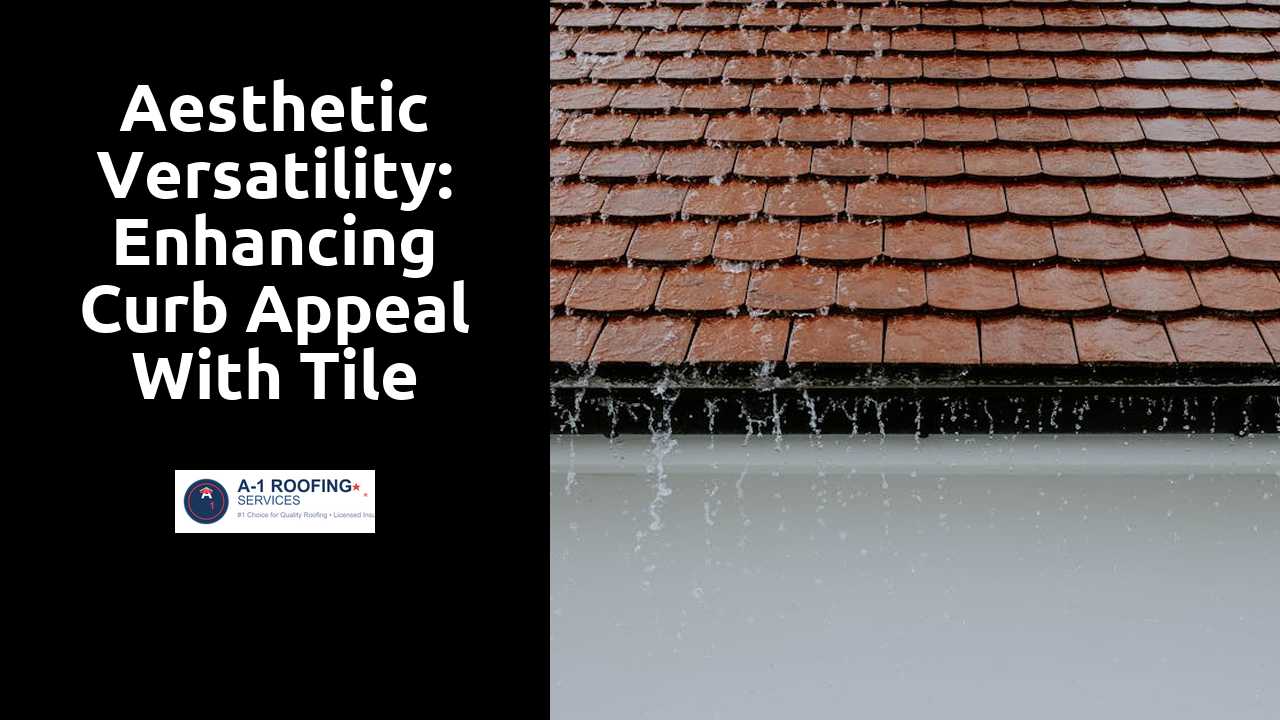
Aesthetic Versatility: Enhancing Curb Appeal with Tile Roofing
Table Of Contents
Cost Considerations for Tile Roofing
Investing in tile roofing often carries a higher upfront cost compared to other materials. The price per square foot for tiles can significantly impact the overall budget, particularly when high-quality options are selected. Installation costs also tend to be higher due to the specialized skills required for proper placement and securing of tiles. Homeowners should consider not only the immediate expenses but also the long-term value that comes with durability and lower maintenance needs.
While the initial financial outlay may seem daunting, tile roofing can offer substantial savings over time. Its longevity, often spanning several decades, means fewer replacements and repairs compared to other roofing materials. Additionally, many tile options are designed to be energy-efficient, potentially lowering utility bills through improved insulation. Ultimately, assessing the total lifetime cost versus short-term savings is crucial for homeowners making decisions about their roofing investment.
Here is a super informative post that goes into more detail.
Budgeting for Materials and Labor
When considering tile roofing, budgeting for both materials and labor is essential for homeowners. The cost of tile varies significantly depending on the type and quality chosen, with options like clay and concrete offering different price points. In addition to material costs, it is crucial to factor in delivery expenses and any potential additional charges for specialized tiles. Homeowners should also account for waste and the need for underlayment, which can influence the overall budget.
Labor costs typically represent a significant portion of the overall expenditure. Installation of tile roofs can be more labor-intensive compared to other materials due to the weight and intricacies involved in laying the tiles. Hiring experienced professionals is advisable to ensure proper installation, which can add to labor costs. It is wise to obtain multiple quotes and consider both quality and reputation when selecting a contractor, as this decision can impact the final financial outlay significantly.
Tile Roofing vs. Other Roofing Materials
When evaluating roofing options, tile roofing stands out for its durability and aesthetic appeal. Unlike asphalt shingles, which typically require frequent replacements, tile roofs can last for decades with proper maintenance. Their ability to resist harsh weather conditions makes them a reliable choice for many homeowners. Furthermore, tile roofs are fire-resistant and offer excellent insulation, which can lead to energy savings over time.
In comparison to metal roofing, tile provides a more traditional look that complements various architectural styles. While metal roofing excels in longevity and can be energy-efficient, it may not suit every home design. Tile roofing's versatility allows it to enhance both contemporary and classic homes, making it a popular option for those looking to boost curb appeal. The rich colors and textures available in tile can create a striking visual impact that often outshines other materials.
Comparisons with Asphalt and Metal Roofing
Tile roofing offers distinct advantages over asphalt and metal materials. While asphalt shingles are often praised for their affordability and ease of installation, they may lack the longevity and aesthetic appeal of tile. Asphalt roofs typically have a lifespan of 15 to 30 years, while tile roofs can last 50 years or more. This durability often translates into lower long-term maintenance costs, making tile a more economical choice for homeowners willing to invest upfront.
Metal roofing, known for its strength and resistance to weather extremes, presents a different set of benefits. However, tile roofing provides a unique aesthetic versatility that metal cannot replicate. Homeowners may find that tile complements various architectural styles, from Mediterranean to modern designs, adding a timeless elegance. Additionally, tile offers superior insulation, which can lead to energy savings over time, making it an appealing option for those looking to enhance both beauty and functionality.
Enhancing Curb Appeal with Tile Roofing
Tile roofing is a visually striking option that can dramatically elevate the appearance of any home. Its range of colors and textures allows homeowners to choose styles that complement their architectural design. Whether opting for traditional terracotta, sleek slate, or contemporary concrete tiles, each option offers a unique aesthetic that can fit various design preferences. The distinct look of tile roofing can stand out in neighborhoods filled with more conventional roofing materials, adding character and individuality to the property.
Moreover, the versatility of tile roofing can enhance curb appeal in numerous architectural styles. Mediterranean and Spanish homes particularly benefit from the warm, rustic look of terracotta tiles. Craftsman and contemporary homes can make a bold statement with modern tiles that reflect clean lines and unique shapes. This adaptability ensures that tile roofing remains relevant in design trends, offering both beauty and functionality to any residence. The enduring nature of tile not only beautifies homes but also signals quality craftsmanship and attention to detail.
Architectural Styles That Benefit
Certain architectural styles particularly shine with the addition of tile roofing. Mediterranean homes prominently feature terracotta tiles, which enhance their rustic charm and warm visual appeal. This roofing choice not only complements stucco and whitewashed exteriors but also reinforces the overall sun-drenched aesthetic typical of coastal environments. In addition to Mediterranean styles, Spanish Revival architecture benefits from the distinctive texture and color variations that tile provides, giving these homes a refined, traditional look.
Victorian and Craftsman houses also gain considerable character from tile roofs. The intricate details of Victorian architecture are beautifully accented by the vibrant hues and patterns found in decorative tiles. Craftsman-style homes, known for their low-slung roofs and overhanging eaves, enhance their earthy aesthetics with the use of natural clay or slate tiles. These roofing options add depth and richness, helping to create a cohesive appearance that elevates the visual impact of the entire structure.
Related Links
Tile Roof Maintenance: Tips for Longevity and PerformanceAdvantages of Choosing Tile Roofing for Your Home